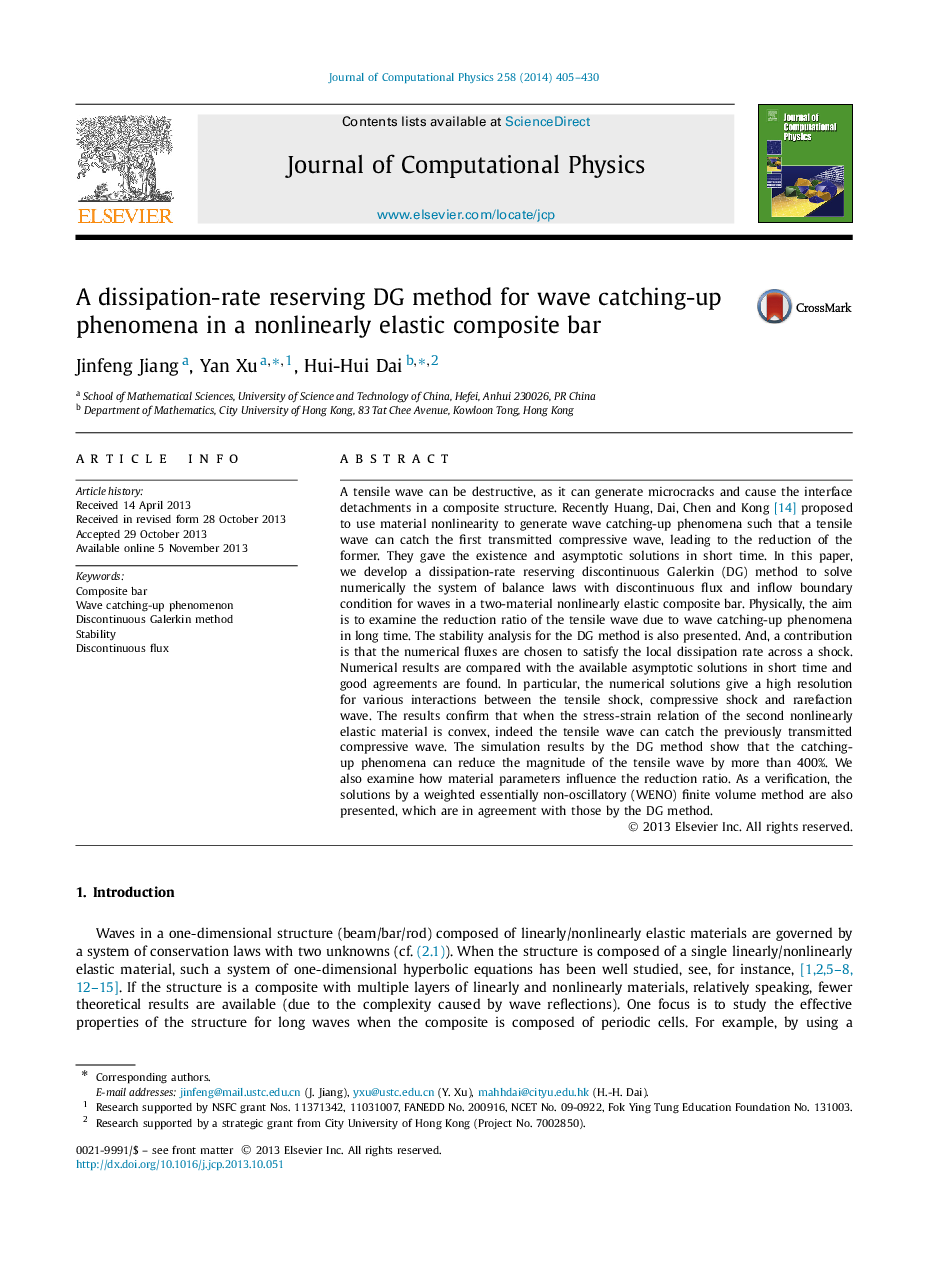| کد مقاله | کد نشریه | سال انتشار | مقاله انگلیسی | نسخه تمام متن |
|---|---|---|---|---|
| 6933080 | 867592 | 2014 | 26 صفحه PDF | دانلود رایگان |
عنوان انگلیسی مقاله ISI
A dissipation-rate reserving DG method for wave catching-up phenomena in a nonlinearly elastic composite bar
دانلود مقاله + سفارش ترجمه
دانلود مقاله ISI انگلیسی
رایگان برای ایرانیان
کلمات کلیدی
موضوعات مرتبط
مهندسی و علوم پایه
مهندسی کامپیوتر
نرم افزارهای علوم کامپیوتر
پیش نمایش صفحه اول مقاله

چکیده انگلیسی
A tensile wave can be destructive, as it can generate microcracks and cause the interface detachments in a composite structure. Recently Huang, Dai, Chen and Kong [14] proposed to use material nonlinearity to generate wave catching-up phenomena such that a tensile wave can catch the first transmitted compressive wave, leading to the reduction of the former. They gave the existence and asymptotic solutions in short time. In this paper, we develop a dissipation-rate reserving discontinuous Galerkin (DG) method to solve numerically the system of balance laws with discontinuous flux and inflow boundary condition for waves in a two-material nonlinearly elastic composite bar. Physically, the aim is to examine the reduction ratio of the tensile wave due to wave catching-up phenomena in long time. The stability analysis for the DG method is also presented. And, a contribution is that the numerical fluxes are chosen to satisfy the local dissipation rate across a shock. Numerical results are compared with the available asymptotic solutions in short time and good agreements are found. In particular, the numerical solutions give a high resolution for various interactions between the tensile shock, compressive shock and rarefaction wave. The results confirm that when the stress-strain relation of the second nonlinearly elastic material is convex, indeed the tensile wave can catch the previously transmitted compressive wave. The simulation results by the DG method show that the catching-up phenomena can reduce the magnitude of the tensile wave by more than 400%. We also examine how material parameters influence the reduction ratio. As a verification, the solutions by a weighted essentially non-oscillatory (WENO) finite volume method are also presented, which are in agreement with those by the DG method.
ناشر
Database: Elsevier - ScienceDirect (ساینس دایرکت)
Journal: Journal of Computational Physics - Volume 258, 1 February 2014, Pages 405-430
Journal: Journal of Computational Physics - Volume 258, 1 February 2014, Pages 405-430
نویسندگان
Jinfeng Jiang, Yan Xu, Hui-Hui Dai,